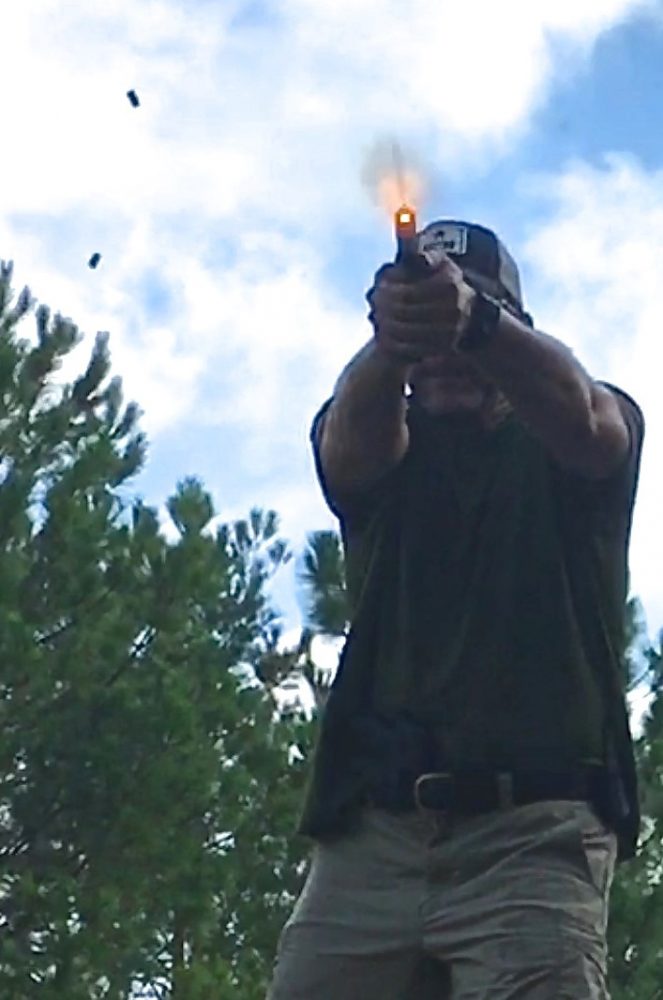A compelling body of evidence from anecdotal as well as organizational studies shows that the fight is likely to happen with the interested parties separated only by a few steps.
Yet serious shooters of every stripe tend to spend most of their time training outside of this bracket and anchor their practice at seven to ten yards. I noticed this a while back and began working to plug the hole. The Five-Yard Roundup is part of the result, and it is working well.
Table of Contents
GETTING REAL
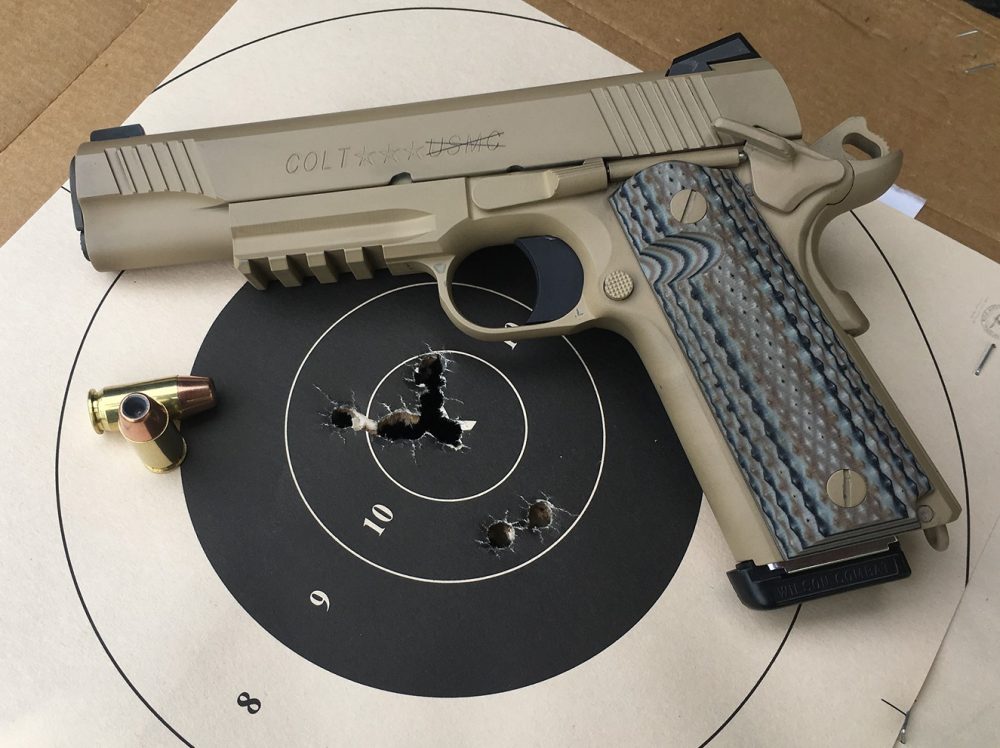
People, with no prompting, follow a pretty strict protocol of greeting one another in passing at a few steps’ separation.
An encounter of any sort at 21 to 30 feet is unusual. An evildoer has several incentives to get close. If it’s simply “getting paid” via robbery, the distance needs to be close to facilitate gaining control, getting the goods, and getting out with minimal notice—not a ten-yard type scenario. Even the crazed fanatic attacking a policeman wants to close the distance to gain a high probability of success (discounting rifle attacks).
The majority of insider attacks in Afghanistan and elsewhere overseas happen at close ranges for the same reasons.
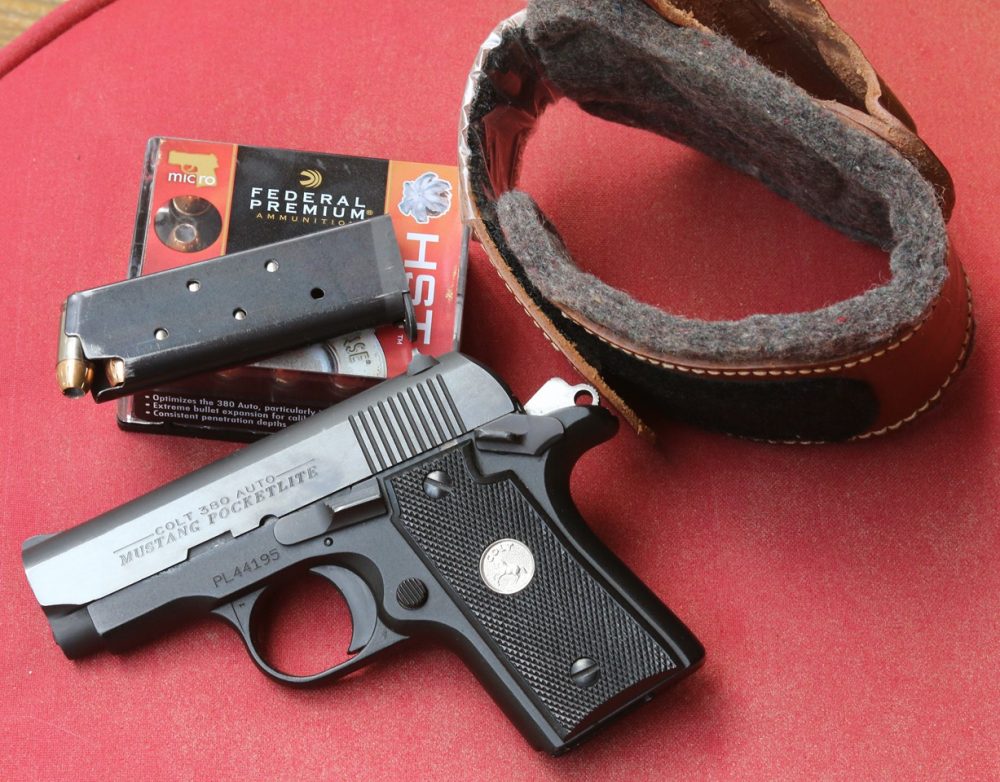
Most law enforcement and military qualifications allow three or more seconds for single sloppy hits. It seems we are largely training to respond too late to even be in the fight, let alone dominate the front end of one.
The preceding data is cross threaded with the battery of standard pistol training drills: El Presidente at ten yards, “The Test” at the same, Bill Drills at seven and ten, etc.
But, you say, “If you’re great at ten yards, five and in are a piece of cake!” Not so fast. I’ve found that shooters who are well grounded at seven to ten are likely to do one of two things when they are presented with a time-pressured drill just a couple of steps closer (and easier).
1) Take far too long, using a ten-yard tempo and amount of verification on the sights, resulting in wasted time.
2) Go a little hogwild, rata-tatting over the top of the handgun and hitting poorly or not at all.
If you want to perform at a high level out to five yards, it stands to reason that you may need to train at five yards. That distance often slips into the “too easy to train” category for many shooters and is summarily skipped. The Five-Yard Roundup addresses this.
THE ROUNDUP
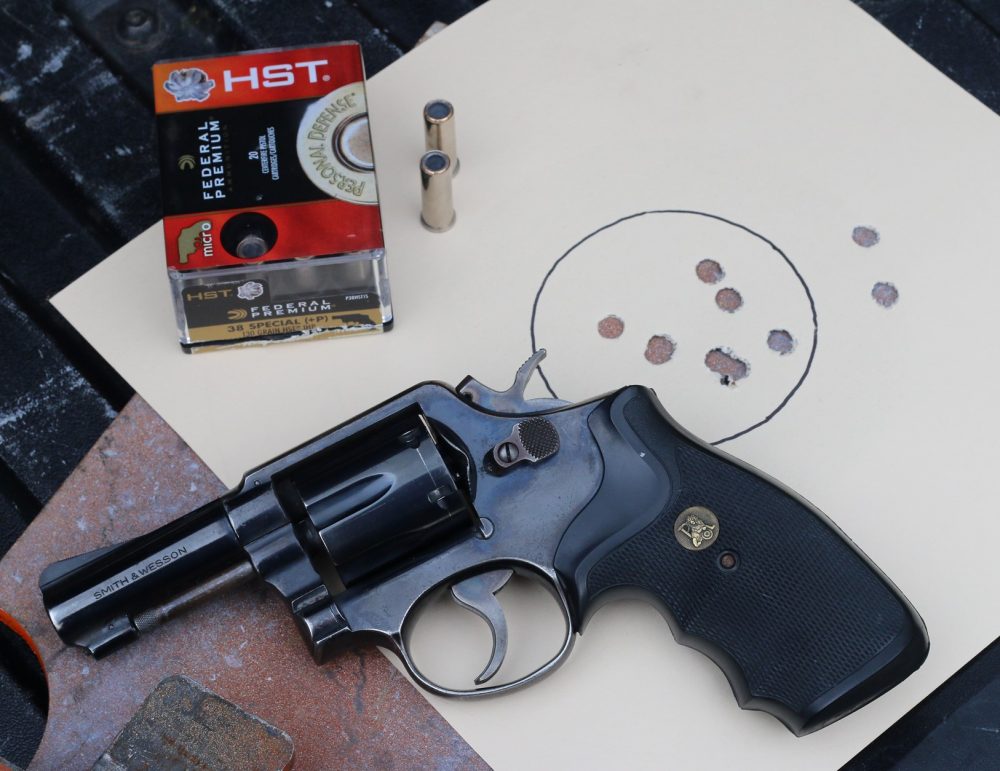
Like most of my drills, it is meant to be simple and easy to administer. All the shooter needs are his duty or carry setup, ten rounds, and an NRA B-8 repair center (25-yard bullseye) stapled up five yards away.
There are four strings of fire, each with a time limit of 2.5 seconds. (Remember the three-second statistic? We want to be effective within that time.) Scoring is by the rings on the target for the ten shots, equaling a possible 100 points. Hits off of the ten-inch repair center are counted as misses and minus ten each. Late hits are noted and five points are deducted per late shot. A “scratch eight” in 2.49 seconds is preferable to a “ten” over the limit, which nets only five points.
String 1: One Shot From the Holster
The first string is somewhat of a gimme for most shooters. Take the gift and don’t complain! The drill is set up to allow duty rigs and concealment to include backups in ankle holsters within the same time limits as the later strings.
Many shooters can “settle in” to a cold start on the drill under full control, executing a nice, deliberate draw and starting the drill with a center “10” hit with some time to spare.
Instructor-level shots will nail an ‘X’ in about 2.0, while the average armed user may initially be a little shaky under the time pressure and be happy to smack black inside of the limit.
String 2: Four Shots From the Ready
The shooter begins in whatever is their personal or unit SOP ready position, leaned in and prepared to stack hits. On the buzzer, they have 2.5 seconds to score four hits. That works out to about one second for the first shot and follow-ups at half-second intervals; not a full cyclic rate round dump, but a nice, highly aggressive and controlled domination of the target. It may be “only” five yards, but stance and technique are the only gateways to getting four center hits at that speed.
String 3: Three Shots From Strong-Hand-Only Ready
I’ve introduced the drill to a wide range of real-deal serious operational shooters. String 2 is a little bit of a wake-up call that they might need to get more serious about training up close. The results are usually decent but not with the level of control they’d like. As they stand by for the beep on the strong-hand string, there’s frequently a good bit of nervous teeth sucking going on!
This is especially true for those who mostly train on unrealistically large targets like the federal “Q” or similar. SWAT or instructor-level dudes can usually get the hits under time within an attempt or three.
For more entry-level professionals or CCW users, it’s a wake-up call that their comfortable speed and degree of recoil control are not up to the task. There are typically two loose hits and maybe one off, and probably one or more late. It takes only a little focused work to bring this to all three on the ten-inch repair center, which is conveniently upper torso sized, within time.
String 4: Two Shots From Support-Hand-Only Ready
Support hand is usually taken as an afterthought. Two good holes in 2.5 require a solid level of control. A chunk of the top 5% level shooters can’t guarantee two tens in the limit on each run. You have to work for it every time.
This string is where the less experienced shooter has to decide whether they go for two in the black and maybe risk a late hit penalty or plant two on the ten-inch center inside of time. Either way, they are far ahead of casually flinging shots onto large silhouettes in time limits more suited to doing long division than winning a fight.
WHAT’S GOOD?
Like most B-8 centered drills, there are levels of achievement. First, all ten hits within time on the ten-inch paper: respectable, useful, and on the right path.
Next, all within the eight-inch “8” ring with most in the black: solid, and demonstrating all the right stuff. This typically works out to a 90 or above score and is about what I’d look for in a SWAT or instructor-level shooter.
Next is all in the black within time. That is usually a 95 or above and is back-slap worthy on any firing line.
Finally, this drill is 100% max-able. The very best can do it regularly, almost on demand, but it requires that everything is done right. Often the last hit with either of the single-hand strings will frustrate that perfect run.
VARIATIONS ON THE THEME
Rimfire
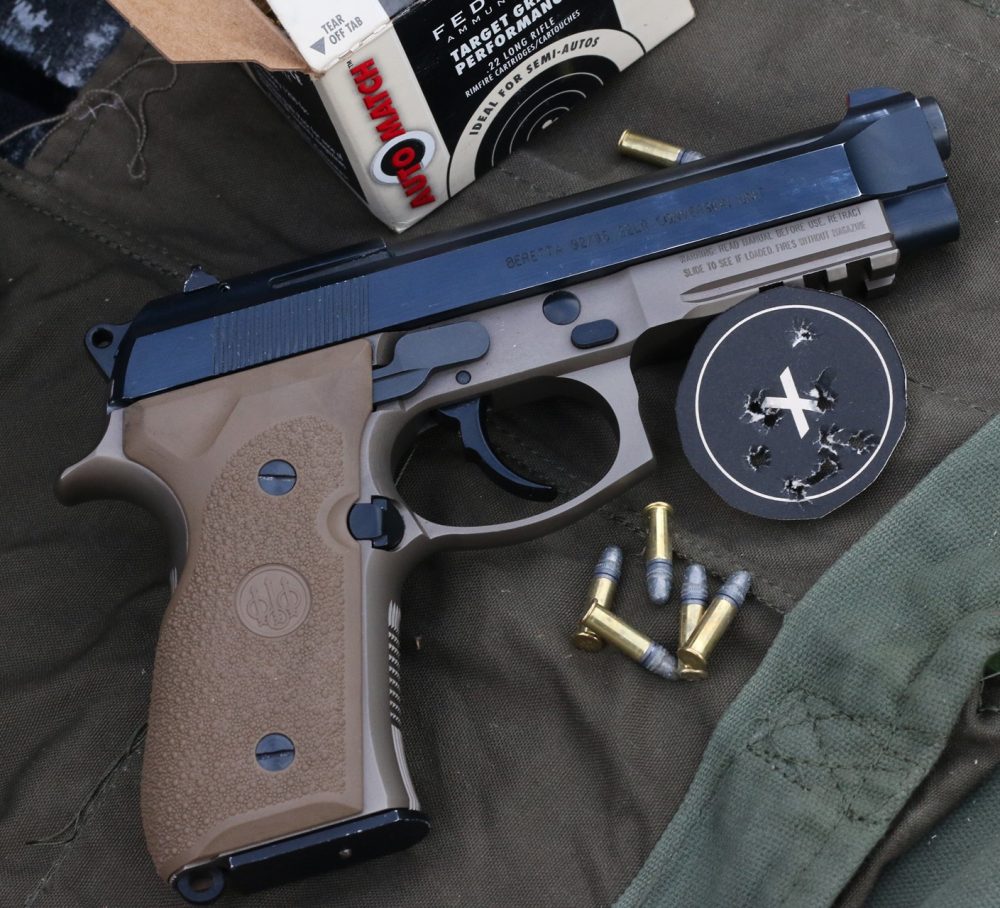
Soon enough, they’re punching clusters of ten little bullet holes in or around the ten-ring. I occasionally bust a time limit or two in an attempt to nail all “Xs,” but it’s still satisfying to knot ‘em up.
Back-Up Gun
The rules, time limits, and everything else remain the same. The challenge increases. This is maybe the best shakeout I know of to see exactly what you are capable of with that BUG compared to your “real” handgun.
The BUG run can also dramatically demonstrate the effect of ammo selection in flyweights. Like that plus-plus-plus P boutique proof load! How well did it work compared to a standard-fare defensive load? Note that the drill is also one of the few that is five-shot friendly, allowing you to run that Snubby.
Carbine

String 1 is adapted to hands on rifle, filled mag inserted, chamber empty (as many of these rifles are stored). On the buzzer, rack the action, mount, and fire a single.
The second string is four from the ready as with the short gun.
String 3 is three strong hand only and String 4 is two from the support-side shoulder, but with both hands. The long-gun variation is a decent “get to know your carbine” drill and easily worked in most indoor ranges.
Max Possible Hits

The strings are the same but the time limits are reduced to 1.5 seconds each, and the shooter has that second and a half to place as many hits as possible inside an eight-inch circle at five yards rather than the scored bullseye. Late hits and misses are ignored, and the score is simply the aggregate number of hits.
This was designed for high-end shooters to absolutely dominate the front end of that statistical three-second fight. Shooters who don’t already have solid control will outrun their headlights and may reinforce bad habits.
Those who are ready for the MPH version will quickly find a balance of aggression and control to work within that severely constrained time limit. Seven total hits are on the right path, ten plus is a great performance.
Seeing a high-end shooter run the Max Possible Hits version absolutely changes your point of view on what is possible in 1.5 seconds.
YOU NEED IT
The Five-Yard Roundup needs to be in your battery of drills. I run it on almost every range session and find it to be a very solid baseline. The roundup is also an impartial truth-teller—the distance and timeframes are based in hard-nosed reality, lending weight to the scores.
Inside the ten shots of the drill, I can get a very good idea of how well I can run a certain platform and where I need to work. The drill is not a replacement for a well-rounded training program, but it is rather useful.
Check it out and see what you think.

